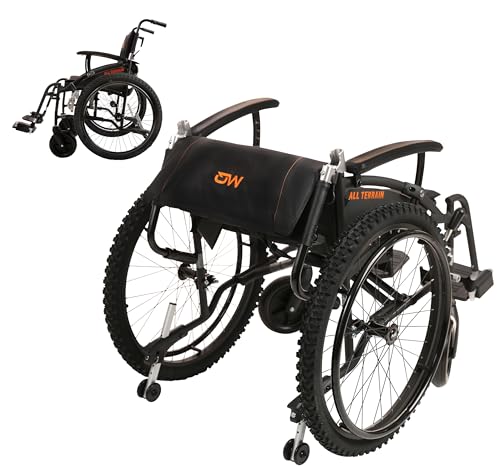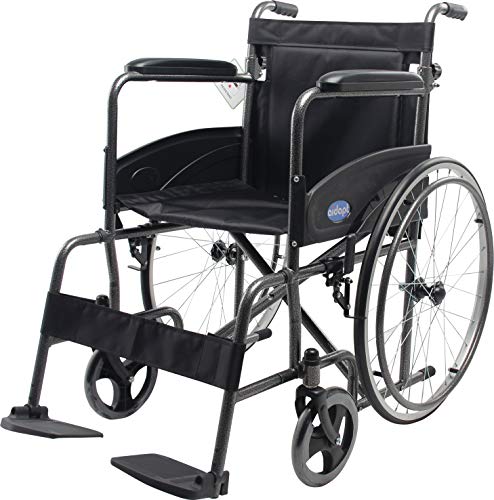See What Self Control Wheelchair Tricks The Celebs Are Using
Types of lightweight self propelled wheelchairs Control Wheelchairs
Many people with disabilities utilize self Control wheelchair control wheelchairs to get around. These chairs are great for everyday mobility, and are able to easily climb hills and other obstacles. They also have large rear shock-absorbing nylon tires that are flat-free.
The translation velocity of the wheelchair was measured using a local field potential approach. Each feature vector was fed to a Gaussian encoder which output an unidirectional probabilistic distribution. The evidence accumulated was used to generate visual feedback, and an alert was sent when the threshold had been reached.
Wheelchairs with hand rims
The type of wheel a wheelchair uses can impact its ability to maneuver and navigate terrains. Wheels with hand-rims can help relieve wrist strain and improve comfort for the user. Wheel rims for wheelchairs can be made from aluminum, steel, or plastic and are available in a variety of sizes. They can be coated with rubber or vinyl for improved grip. Some come with ergonomic features, for example, being designed to conform to the user’s closed grip and wide surfaces for all-hand contact. This allows them to distribute pressure more evenly and also prevents the fingertip from pressing.
A recent study found that flexible hand rims decrease the impact force and the flexors of the wrist and fingers when a wheelchair is being used for propulsion. They also provide a larger gripping surface than tubular rims that are standard, permitting the user to exert less force while maintaining the stability and control of the push rim. They are available from a variety of online retailers and DME suppliers.
The study’s findings showed that 90% of respondents who had used self propelled wheelchair the rims were happy with them. It is important to remember that this was an email survey of people who purchased hand rims from Three Rivers Holdings, and not all wheelchair users with SCI. The survey also did not evaluate the actual changes in symptoms or pain, but only whether the people felt that there was a change.
The rims are available in four different models which include the light, big, medium and the prime. The light is a small round rim, whereas the medium and big are oval-shaped. The rims with the prime have a larger diameter and an ergonomically contoured gripping area. The rims are able to be fitted on the front wheel of the wheelchair in various colors. They are available in natural light tan, and flashy blues, greens, pinks, reds and jet black. They are also quick-release and can be removed for cleaning or maintenance. The rims are protected by rubber or vinyl coating to prevent the hands from sliding off and creating discomfort.
Wheelchairs with tongue drive
 Researchers at Georgia Tech developed a system that allows people in wheelchairs to control other electronic devices and move it by using their tongues. It is made up of a tiny tongue stud and magnetic strips that transmit movement signals from the headset to the mobile phone. The phone converts the signals into commands that control a device such as a wheelchair. The prototype was tested on able-bodied individuals as well as in clinical trials with those who have spinal cord injuries.
Researchers at Georgia Tech developed a system that allows people in wheelchairs to control other electronic devices and move it by using their tongues. It is made up of a tiny tongue stud and magnetic strips that transmit movement signals from the headset to the mobile phone. The phone converts the signals into commands that control a device such as a wheelchair. The prototype was tested on able-bodied individuals as well as in clinical trials with those who have spinal cord injuries.
To evaluate the performance, a group physically fit people completed tasks that assessed input accuracy and speed. Fittslaw was employed to complete tasks, such as keyboard and mouse use, and maze navigation using both the TDS joystick and the standard joystick. A red emergency override stop button was integrated into the prototype, and a second was present to help users press the button when needed. The TDS performed as well as a normal joystick.
In a separate test in another test, the TDS was compared to the sip and puff system. It lets people with tetraplegia to control their electric wheelchairs by sucking or blowing into a straw. The TDS performed tasks three times more quickly, and with greater accuracy than the sip-and puff system. The TDS is able to operate wheelchairs with greater precision than a person suffering from Tetraplegia who controls their chair with a joystick.
The TDS was able to track tongue position with a precision of less than 1 millimeter. It also incorporated cameras that could record the eye movements of a person to interpret and detect their movements. Software safety features were also implemented, which checked for valid inputs from users 20 times per second. If a valid user input for UI direction control was not received for 100 milliseconds, the interface modules automatically stopped the wheelchair.
The next step for the team is testing the TDS on people who have severe disabilities. They have partnered with the Shepherd Center which is an Atlanta-based hospital that provides catastrophic care and the Christopher and Dana Reeve Foundation, to conduct those trials. They intend to improve their system’s tolerance for ambient lighting conditions, and to include additional camera systems, and to enable the repositioning of seats.
Wheelchairs with a joystick
A power wheelchair with a joystick allows users to control their mobility device without relying on their arms. It can be mounted in the center of the drive unit or on either side. The screen can also be added to provide information to the user. Some screens have a large screen and are backlit to provide better visibility. Some screens are smaller and contain symbols or pictures to aid the user. The joystick can also be adjusted to accommodate different hand sizes grips, sizes and distances between the buttons.
As power wheelchair technology has improved and improved, doctors have been able to design and create alternative driver controls to allow clients to maximize their potential for functional improvement. These innovations also allow them to do so in a way that is comfortable for the end user.
A normal joystick, for example is a proportional device that uses the amount of deflection in its gimble in order to produce an output that increases with force. This is similar to how accelerator pedals or video game controllers function. However, this system requires good motor function, proprioception and finger strength to function effectively.
A tongue drive system is a second kind of control that makes use of the position of the user’s mouth to determine which direction in which they should steer. A tongue stud that is magnetic transmits this information to the headset, which can execute up to six commands. It is a great option for people with tetraplegia and quadriplegia.
In comparison to the standard joystick, some alternative controls require less force and deflection to operate, which is especially helpful for users who have limited strength or finger movement. Others can even be operated by a single finger, making them perfect for those who are unable to use their hands at all or have limited movement.
Additionally, certain control systems come with multiple profiles that can be customized to meet the needs of each user. This is important for new users who may require adjustments to their settings regularly when they feel tired or are experiencing a flare-up of a disease. This is beneficial for experienced users who want to alter the parameters that are set for a specific setting or activity.
 Wheelchairs with steering wheels
Wheelchairs with steering wheels
self propelled lightweight folding wheelchair-propelled wheelchairs can be used by people who need to get around on flat surfaces or up small hills. They have large rear wheels for the user to grasp as they propel themselves. They also have hand rims, that allow the user to make use of their upper body strength and mobility to steer the wheelchair in either a either direction of forward or backward. Self-propelled wheelchairs can be equipped with a wide range of accessories, such as seatbelts that can be dropped down, dropdown armrests and swing-away leg rests. Some models can be converted into Attendant Controlled Wheelchairs to help caregivers and family members drive and operate the wheelchair for those who require additional assistance.
Three wearable sensors were attached to the wheelchairs of the participants to determine the kinematics parameters. These sensors tracked the movement of the wheelchair for the duration of a week. The wheeled distances were measured using the gyroscopic sensor that was mounted on the frame as well as the one that was mounted on the wheels. To differentiate between straight forward motions and turns, the period of time when the velocity differences between the left and right wheels were less than 0.05m/s was considered to be straight. The remaining segments were analyzed for turns, and the reconstructed paths of the wheel were used to calculate the turning angles and radius.
This study included 14 participants. They were tested for accuracy in navigation and command latency. Through an ecological experiment field, they were tasked to navigate the wheelchair through four different waypoints. During the navigation trials, sensors tracked the path of the wheelchair across the entire distance. Each trial was repeated twice. After each trial, participants were asked to choose the direction in which the wheelchair could be moving.
The results showed that a majority of participants were able to complete navigation tasks, even although they could not always follow the correct directions. In average 47% of turns were completed correctly. The remaining 23% their turns were either stopped directly after the turn, wheeled on a later turning turn, or superseded by a simpler move. These results are similar to previous studies.

Leave a Reply